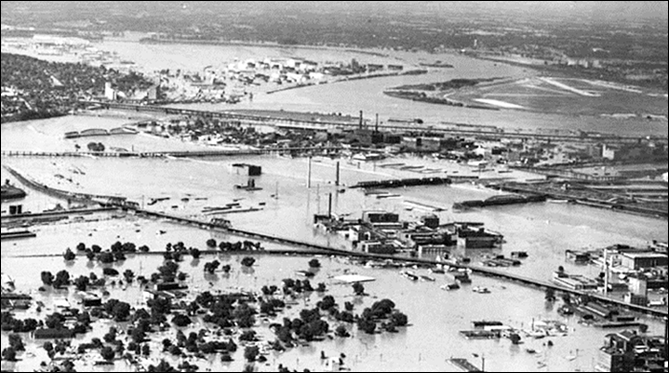
On this page you learn what types of flooding are typical in Kansas and how do you protect yourself, your family and your home. You will also find out more about significant Kansas floods. Finally, you will find links to NWS offices that provide forecast and safety information for Kansas, as well as links to our partners who play a significant role in keeping you safe.
Learn More:
 |
 |
 |
| Flooding along the Kansas River at Lecompton (photo taken by the USGS) | Water release at Tuttle Creek Dam as the lake had reached capacity (photo taken by the USGS) |
Learn More:
 |
| Flooding in Augusta, Kansas looking west from a hilltop near 7th and Cliff Drive, (photo courtesy of the Augusta Gazette) |
Learn More:
Floods in Kansas between May and July 2007 caused significant damage in more than 20 counties, resulted in one loss of life, and shattered previous streamflow records at 16 long-term USGS streamgages. In addition, 3,300 structures were damaged due to these floods. The flooding which occurred during May 2007 affected basins from central into parts of eastern Kansas. In July, major flooding affected extreme east and southeast portions of the state. During the July flooding, an oil refinery in Coffeyville, Kansas was inundated by floodwaters from the Verdigris River, causing an oil spill which added further to the devastating impacts of these floods.
Learn More:
|
||||||